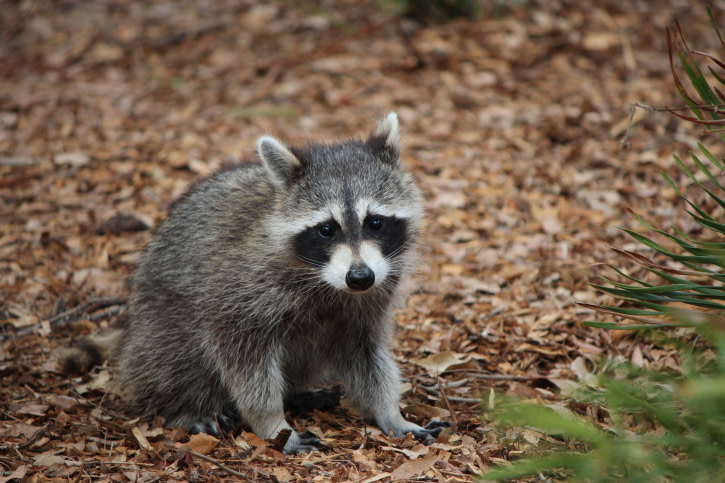
Protecting Wildlife From Traffic
As a Kitchener resident, you may already know that blossoming backyards and protected conservation spaces help make the region a shared space with a variety of wildlife species. As you tend to your garden this spring, you may have already spotted the wildlife that have awoken from their cold and long winter slumbers.
Much like humans use roads for routes of transportation, so do the wildlife around us. Animals will often cross roads as they look for food sources and shelter. Since spring has now arrived and more wildlife are born into our Kitchener communities, this is the perfect time to protect wildlife from the roads. Use this blog as your guide to create a safe spring for the wildlife around us.
Keeping Wildlife Away From Roads
Since many species in Kitchener Waterloo use roads as points of travel, diverting wildlife away from these areas is an important step in conservation. One way to do this is by advocating for the creation of wildlife crossings such as underpasses or overpasses. These structures allow wildlife to safely cross roads without coming into contact with vehicles. There has been great success in areas where wildlife crossings have been installed, allowing for many different species to use them as a daily route.
Encouraging wildlife toward their natural habitats is a great way to keep them away from the roads in our communities. Oftentimes animals like squirrels, skunks, raccoons and rabbits make their way across busy roads to search for vegetation and denning areas in our gardens and yards. Protect your budding garden and flower bed this year with screening to keep out the paws of our wildlife friends away. This will nudge them toward more natural and suitable environments in Kitchener’s many parks and conservation areas.
Protecting Nocturnal Wildlife
Although you may not see them as often, nocturnal wildlife are busy every night looking through gardens, lawns and fallen trash of unsuspecting Kitchener residents. From raccoons to skunks, the nightlife for animals in Kitchener is always active. Most of the time, these furry little creatures are hidden from well lit areas like the road as they go about their nightly activities. However, sometimes they may need to cross a road to get to their favourite feasting area, or to make it back to their den. In this case there are important steps you can take to keep our wildlife safe.
Driving at a safe speed is one of the best ways to ensure you spot any nocturnal wildlife crossing the road. Using high beams on dark, unlit roads where no oncoming cars are approaching is another key way to spot any nocturnal animals. Although they prefer the dark, they will still cross in areas where lamps and street lights are present. Alert neighbours to your findings, so that they can also ensure the nocturnal animals travel safely.
Look Out During Migration Season
Here in Ontario, we are lucky to see a variety of wildlife species migrate each year. One of the most famous migratory creatures being monarch butterflies, who begin their trip to Mexico in the fall. Many bird species in Ontario also head to warmer climates during the winter months. In the Kitchener Waterloo region, the colourful birds in our backyards like the Yellow Warbler and the White-Throated Sparrow are just some of the feathered friends you may be able to spot as they fly the nest. When it comes to migratory crossings on KW roads however, there is one key species that you must keep an eye out for - turtles! The shelled mammals typically migrate between April and October in Ontario.
Roads and highways are the most dangerous places for urban animals as they migrate to more favourable conditions. In 2023, the Region of Waterloo installed two turtle tunnels on Roseville Road in North Dumfries after nearby residents spotted turtles and voiced concerns. These tunnels allow for the turtles to travel safely on their migratory routes. With new innovations and changes to our local infrastructure, providing wildlife with safe crossing through urban areas is entirely possible.
Encouraging Wildlife To Stay In Their Natural Dens
Here in Kitchener, residents find rabbits, squirrels, raccoons and many other species living in their garden or backyard every year. Although you should always encourage wildlife towards their natural habitat, if an animal has already established a den in your community, allowing them to den there until their young have grown and weaned from their mothers care is a great way to keep the family unit safe. If you happen to spot a nest of den in your yard that cannot be left alone, or is located in a dangerous spot for the animals, contacting a humane wildlife control service like Skedaddle is necessary to keep the animals and ourselves safe.
While these little creatures stay on your property, the best thing to do is to maintain your distance. If you have pets, keep them away from the nests when they go outside. Keeping any pet food inside is a great way to ensure the animals do not attempt to get closer to your home. Place water bowls close to the ground so that mom has a nearby water source while she cares for her young. Once the weather starts to warm, you may even be able to spot the wildlife family in your backyard as they begin to explore the world!
Learn more about Skedaddle and the work they do here.


